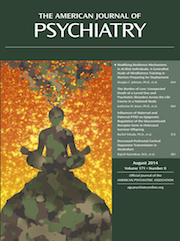Gray Matter Abnormalities in Childhood Maltreatment: A Voxel-Wise Meta-Analysis
Abstract
Objective
Childhood maltreatment acts as a severe stressor that produces a cascade of physiological and neurobiological changes that lead to enduring alterations in brain structure. However, structural neuroimaging findings have been inconsistent. The authors conducted a meta-analysis of published whole-brain voxel-based morphometry studies in childhood maltreatment to elucidate the most robust volumetric gray matter abnormalities relative to comparison subjects to date.
Method
Twelve data sets were included, comprising 331 individuals (56 children/adolescents and 275 adults) with a history of childhood maltreatment and 362 comparison subjects (56 children/adolescents and 306 adults). Anisotropic effect size-signed differential mapping, a voxel-based meta-analytic method, was used to examine regions of smaller and larger gray matter volumes in maltreated individuals relative to comparison subjects.
Results
Relative to comparison subjects, individuals exposed to childhood maltreatment exhibited significantly smaller gray matter volumes in the right orbitofrontal/superior temporal gyrus extending to the amygdala, insula, and parahippocampal and middle temporal gyri and in the left inferior frontal and postcentral gyri. They had larger gray matter volumes in the right superior frontal and left middle occipital gyri. Deficits in the right orbitofrontal-temporal-limbic and left inferior frontal regions remained in a subgroup analysis of unmedicated participants. Abnormalities in the left postcentral and middle occipital gyri were found only in older maltreated individuals relative to age-matched comparison subjects.
Conclusions
The findings demonstrate that the most consistent gray matter abnormalities in individuals exposed to childhood maltreatment are in relatively late-developing ventrolateral prefrontal-limbic-temporal regions that are known to mediate late-developing functions of affect and cognitive control, which are typically compromised in this population.



